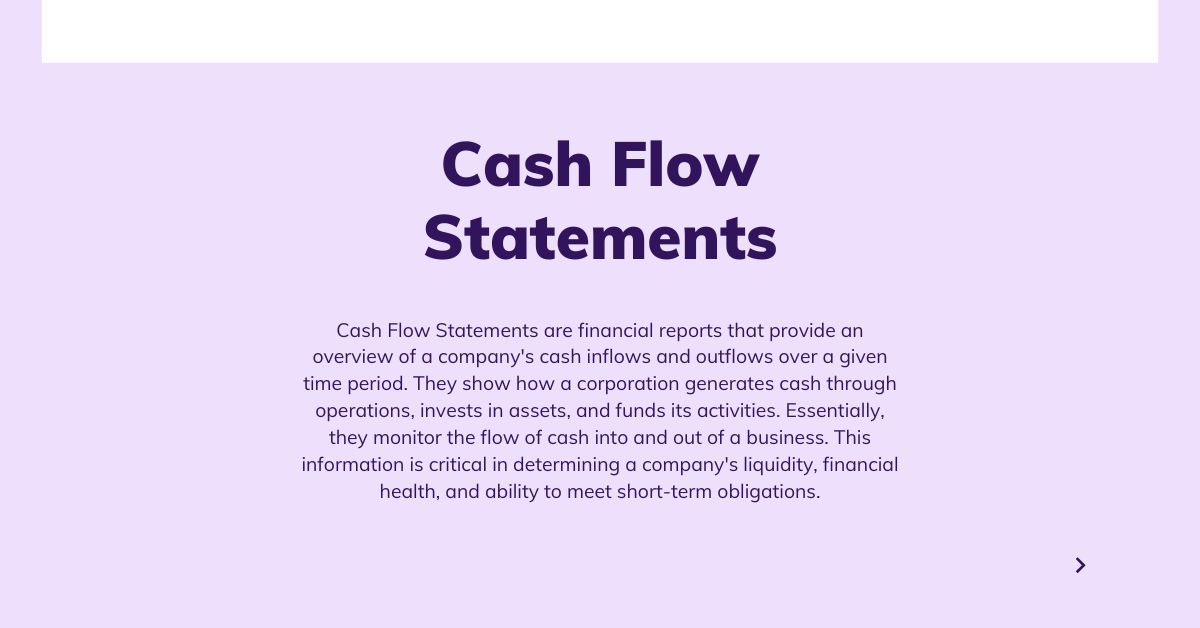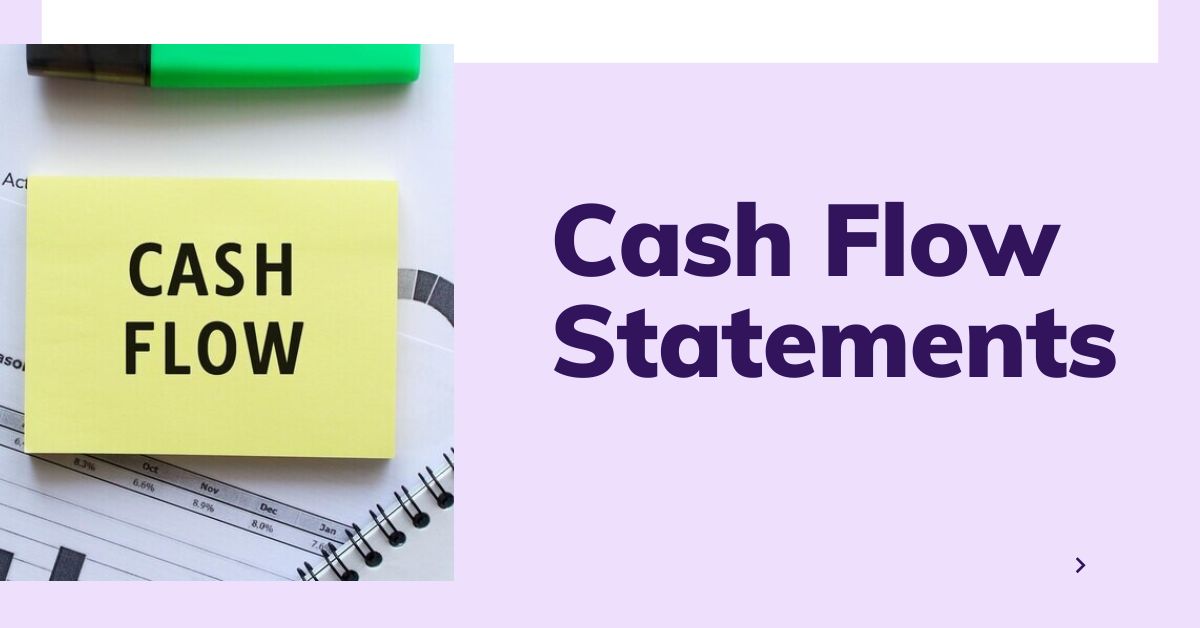Whether you’re a working professional, business owner, entrepreneur, or investor, learning how to understand and read a cash flow statement can help you extract valuable information about a company’s financial health.
If you’re an investor, this information can help you decide whether to invest in a company. If you’re a business owner or entrepreneur, it can assist you in understanding business performance and adjusting critical projects or plans. If you’re a manager, it can help you manage budgets more effectively, supervise your staff, and build stronger relationships with leadership, ultimately allowing you to play a bigger role in your firm.
Not everyone has financial or accounting knowledge. Non-finance professionals may struggle to grasp the concepts underlying a cash flow statement and other financial papers.
To help you understand what a cash flow statement is, here’s everything you need to know.
What is Cash Flow Statements?

Cash Flow Statements are financial reports that provide an overview of a company’s cash inflows and outflows over a given time period. They show how a corporation generates cash through operations, invests in assets, and funds its activities. Essentially, they monitor the flow of cash into and out of a business. This information is critical in determining a company’s liquidity, financial health, and ability to meet short-term obligations.
Cash Flow Statement Sections
Cash flow statements frequently divide into three major sections:
- Operating Activities: This section covers the company’s primary business activities. It contains cash inflows from sales and services, as well as cash outflows for expenses like salary, rent, and cost of products sold.
- Investing Activities: This part monitors cash flows from the purchase and sale of long-term assets such as property, plants, and equipment, as well as investments in other businesses.
- Financing Activities: This section displays financial flows connected to business financing, such as stock issuance or repurchase, borrowing, and debt repayment.
By examining these three components, investors and analysts can acquire insight into a company’s financial performance, growth potential, and capacity to manage its resources successfully.
Example of Cash Flow Statements
Imagine a Company: Acme Widgets
Period: January 1 to December 31, 2024
Operating Activities
- Cash Inflows:
- Sales of widgets: $100,000
- Cash Outflows:
- Cost of goods sold: $50,000
- Operating expenses (salaries, rent, utilities): $30,000
- Net cash from operating activities: $20,000
Investing Activities
- Cash Outflows:
- Purchase of new machinery: $25,000
- Net cash from investing activities: -$25,000
Financing Activities
- Cash Inflows:
- Borrowing from a bank: $15,000
- Cash Outflows:
- Repayment of long-term debt: $5,000
- Net cash from financing activities: $10,000
Net Increase (Decrease) in Cash: $5,000
Beginning Cash Balance: $10,000 Ending Cash Balance: $15,000
In this simplified example:
- Operating Activities: Acme Widgets generated $20,000 in cash from its core business operations.
- Investing Activities: The company spent $25,000 on new machinery.
- Financing Activities: Acme borrowed $15,000 and repaid $5,000 of existing debt.
- Overall: The company’s cash balance increased by $5,000 during the year.
This basic structure provides a clear overview of how cash moved in and out of the business. More complex cash flow statements would include additional items and subcategories.
How Cash Flow Statements is Used?
A variety of stakeholders use cash flow statements to assess a company’s financial health and performance. Investors use them to assess a company’s capacity to earn income, pay dividends, and support future expansion. Lenders consider a company’s ability to repay debts. Creditors assess a company’s capacity to fulfill its short-term debts.
Management uses cash flow figures to make choices concerning capital expenditures, dividend payments, and financing requirements. Overall, cash flow statements offer vital details about a company’s liquidity, financial stability, and operational efficiency.
What Can the Cash Flow Statements Tell Us?
Cash flow statements can provide vital information about a company’s financial health and performance. They can reveal:
- Liquidity: A company’s ability to meet its short-term obligations.
- Solvency: A company’s ability to meet its long-term obligations.
- Financial flexibility: A company’s ability to adapt to changing economic conditions.
- Operating efficiency: A company’s ability to generate cash from its core business activities.
- Investment strategy: A company’s approach to investing in assets and growth opportunities.
- Financing strategy: A company’s reliance on debt or equity financing.
Investors, lenders, and management can acquire an in-depth understanding of a company’s financial condition and future prospects by examining the three major areas of a cash flow statement (operating, investing, and financing operations). We already discussed above.
Want to read more about financial blogs? You can read these blogs:
- What is Liquidity and Solvency Ratios? A Comprehensive Guide to Financial Health
- Financial Leverage: The Risks and Rewards of Using Debt to Finance Growth
Cash Flow Statement vs. Balance Sheet
| Feature | Cash Flow Statement | Balance Sheet |
|---|---|---|
| Purpose | Shows the movement of cash in and out of a business over a specific period. | Provides a snapshot of a company’s financial position at a specific point in time. |
| Timeframe | Focuses on cash flows over a period (e.g., quarterly, annually). | Presents a static view of assets, liabilities, and equity at a particular date. |
| Content | Includes cash inflows from operations, investing, and financing activities, as well as cash outflows. | Lists a company’s assets, liabilities, and equity. |
| Key Questions Answered | How has the company’s cash position changed over time? Where is the cash coming from and going to? | What does the company own (assets) and owe (liabilities)? What is the value of the company’s equity? |
| Relationship | The ending cash balance on the cash flow statement should equal the beginning cash balance on the balance sheet. | The balance sheet provides the starting point for the cash flow statement. |
Negative Cash Flow vs. Positive Cash Flow
| Feature | Negative Cash Flow | Positive Cash Flow |
|---|---|---|
| Definition | When a company’s cash outflows exceed its cash inflows. | When a company’s cash inflows exceed its cash outflows. |
| Implications | May indicate financial difficulties, such as an inability to meet short-term obligations or invest in growth. | Generally a positive sign, suggesting financial stability and the ability to fund operations and growth. |
| Possible Causes | Increased expenses, decreased revenue, significant capital expenditures, or debt repayment. | Increased revenue, decreased expenses, asset sales, or new financing. |
| Actions to Consider | Reducing expenses, increasing revenue, delaying capital expenditures, or obtaining additional financing. | Investing in growth opportunities, paying down debt, or returning value to shareholders. |
| Note | While negative cash flow can be concerning, it’s important to consider the overall context of a company’s financial situation and the reasons behind the negative cash flow. | Positive cash flow is generally a positive sign, but it’s also essential to assess the quality of the cash inflows and the sustainability of the positive cash flow. |

